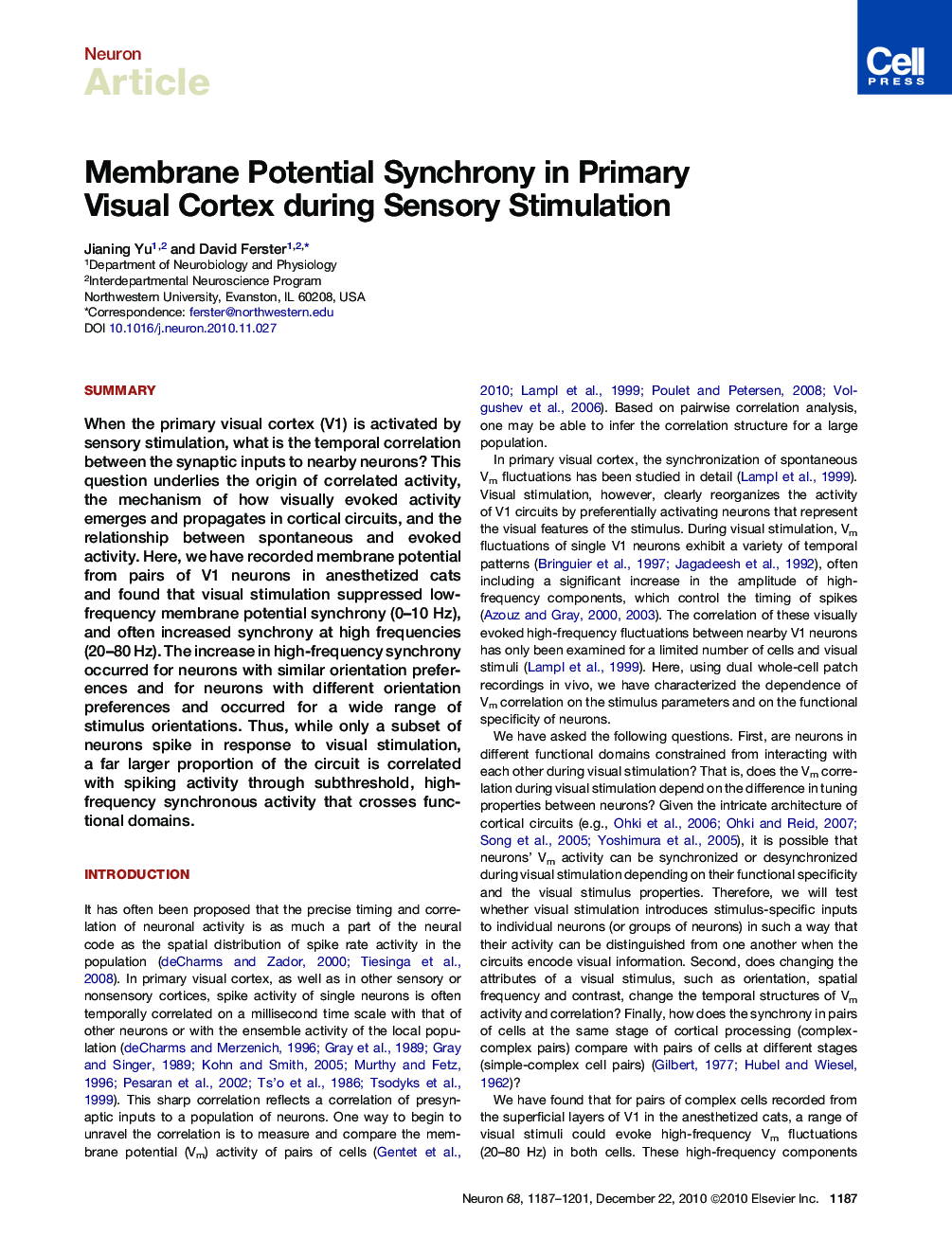| Article ID | Journal | Published Year | Pages | File Type |
|---|---|---|---|---|
| 4321865 | Neuron | 2010 | 15 Pages |
SummaryWhen the primary visual cortex (V1) is activated by sensory stimulation, what is the temporal correlation between the synaptic inputs to nearby neurons? This question underlies the origin of correlated activity, the mechanism of how visually evoked activity emerges and propagates in cortical circuits, and the relationship between spontaneous and evoked activity. Here, we have recorded membrane potential from pairs of V1 neurons in anesthetized cats and found that visual stimulation suppressed low-frequency membrane potential synchrony (0–10 Hz), and often increased synchrony at high frequencies (20–80 Hz). The increase in high-frequency synchrony occurred for neurons with similar orientation preferences and for neurons with different orientation preferences and occurred for a wide range of stimulus orientations. Thus, while only a subset of neurons spike in response to visual stimulation, a far larger proportion of the circuit is correlated with spiking activity through subthreshold, high-frequency synchronous activity that crosses functional domains.
► Visual stimulation induces synchronous high-frequency membrane potential activity ► The synchrony occurs between neurons with similar or different stimulus preferences ► A wide range of stimuli can evoke strong synchrony ► Low- and high-frequency components are modulated differentially
